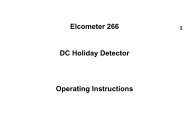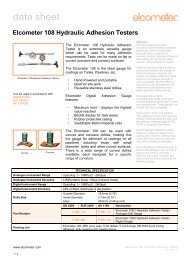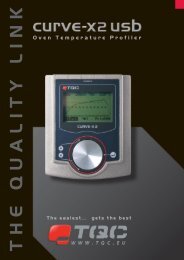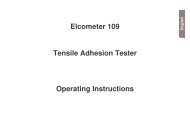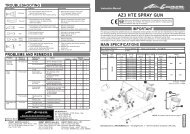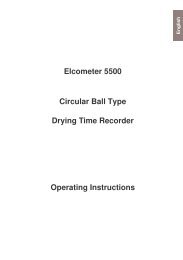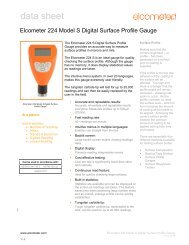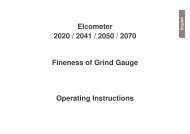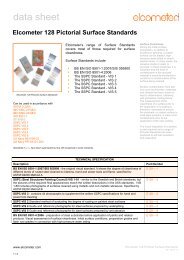You also want an ePaper? Increase the reach of your titles
YUMPU automatically turns print PDFs into web optimized ePapers that Google loves.
2 TEST PROCEDURE<br />
Operation of the gauge is a straightforward three-stage process:<br />
1. Adhere dolly to coating<br />
2. Attach gauge to dolly<br />
3. Apply pressure and record result<br />
2.1 ADHERE DOLLY TO COATING<br />
1.<br />
2.<br />
Identify dolly test surface (Figure 1).<br />
Ensure test surface of dolly is clear of old<br />
adhesive. If necessary, remove adhesive as<br />
detailed in “Clean the dolly” on page 8.<br />
X<br />
3. Wipe dolly test surface and sample area with a<br />
solvent to remove oil and grease.<br />
4. Apply a thin, even coat of adhesive to dolly test<br />
surface. If adhesive is low viscosity refer to “Use of<br />
dolly plugs” on page 9.<br />
Dolly test surface<br />
Sample<br />
5. Press dolly on to sample for about 10 seconds. Figure 1. Adhere dolly test surface to sample<br />
6. Leave dolly undisturbed for at least 15 minutes<br />
(preferably for 2 hours or more), to allow the<br />
adhesive to harden.<br />
7. If scoring of the coating around the dolly is required refer to “Cutting around the dolly” on page 11.<br />
R<br />
5




